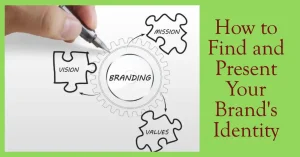Any business entity be it banks, airports, and more all need to verify the identity of their customers to keep frauds in control and to meet certain regulatory laws. Failing to follow these regulations can cost the businesses a bad reputation and ultimately they can also lose their potential customers. Document verification is what helps businesses in this regard. It aids businesses to verify their potential clients’ identities and ensure that they do their business with legitimate customers.
Identity theft is the most prevalent fraud associated with failing the verification process. As per the reports of the Federal Trade Commission (FTC), almost 1.4 million cases of fraud took place in 2018. In the digital world, the easiest thing to do fraud is by stealing someone else’s identity. People do that. Impersonation is the process of assuming a fake identity to obtain certain benefits relevant to that particular person. Social media channels can be a very easy target to perform such illicit activities. Like the person can take the username of anyone and can comment on his/ her behalf to make that person earn a bad reputation.
The document verification process helps businesses to prevent a lot of online fraud by authenticating the identity of their customers. It helps businesses to identify their identity through the internet rather than in-person, in-branch, or in-store. There are many types of identity documents that can be verified through the document verification process like ID documents, passports, driving licenses, government-based documents, educational certificates, and many more.
Fraudulent Documents
Modified documents are the type of documents that the fraudsters create by altering the information in the genuine, original documents. Illegitimate documents are entirely falsely created documents. While falsely presented documents are the ones that are legitimate and original documents but do not belong to the person presenting them. ID verification processes are also used to ensure that you catch up on forged, photoshopped documents before they can be used to commit fraud.
Document validation process completes in three steps:
The first step in the identity documents is the process of capturing or uploading the front side of the government-issued ID document in real-time. The information from the documents can be extracted by using state of art Optical Character Recognition (OCR) technology. In the last step, the information is verified and the results are sent via API or back office.
Benefits of document validation in an effective B2C relationship
The identity documents verification process is a very seamless process. It is as easy as providing the digital version of your ID document and letting the software do the rest of the process. The advanced form of the verification process helps the merchants to win the loyalty of their customers and ultimately enhances the effective B2C relationship.
It helps to detect different types of ID frauds
The number of frauds linked with the ID documents is far greater than the total number of them. Therefore, there need to be various types of approaches to catch them up. The significant thing to look for in any document to detect the probability of its falseness is checking the data consistency in them. Data consistency refers to checking the registration number, expiry date, date of issuance of the document, gender, and other encoded data in the document.
It can be processed over the internet
The fact that the document attestation process can happen over the internet has reduced the manual labor in it. Documentation verification only requires seconds to complete. The checking is done through the internet has lowered the chances of human error in verification procedures to the lowest.
It is compliant with regulations
The document checks that most businesses used in the past were in-person processes but due to the development of technology, AI-driven identification services have taken their place. The major part of the business is now being done on mobile phones and computers and the business representative can ensure that you are who you say you are and your identity is not stolen.
To ensure this tactic, certain regulatory authorities like the Financial Action Task Force (FATF) and Financial Transactions Report Analysis Centre of Canada (FINTRAC) have developed KYC and AML compliance for the businesses to abide by. These regulations perform the Customer Due Diligence (CDD) to verify the ID of customers. This can be achieved by properly analyzing customers’ documents to authenticate their identity and eliminate the chances of fraud.
Combining document and facial verification checks
The best detection of frauds like falsely presented documents can be made possible by matching the digital image of the customer against the image on the document. The document check plus a facial check can prove to be a better verification process. Document check along with facial check also aids in keeping the minors from accessing age-restricted websites.
Prevent fraudulent transactions from taking place
Once done with the document checks, it is impossible for fraudsters to perform any illegal transaction. Identity document verification ensures that the document presented is original and belongs to the individual claiming to be its real owner. Therefore after all these checks, the probability of fraudulent transactions reduces to a minimum.
Conclusion
Online frauds can be prevented by following some verification checks on the customers. Digital processes prove to be a plus point in a way that they complete at a faster pace producing authentic results. Document verification detects various ID type frauds and follows certain regulatory laws thus strengthening B2C relationships.
Go to Home Page




